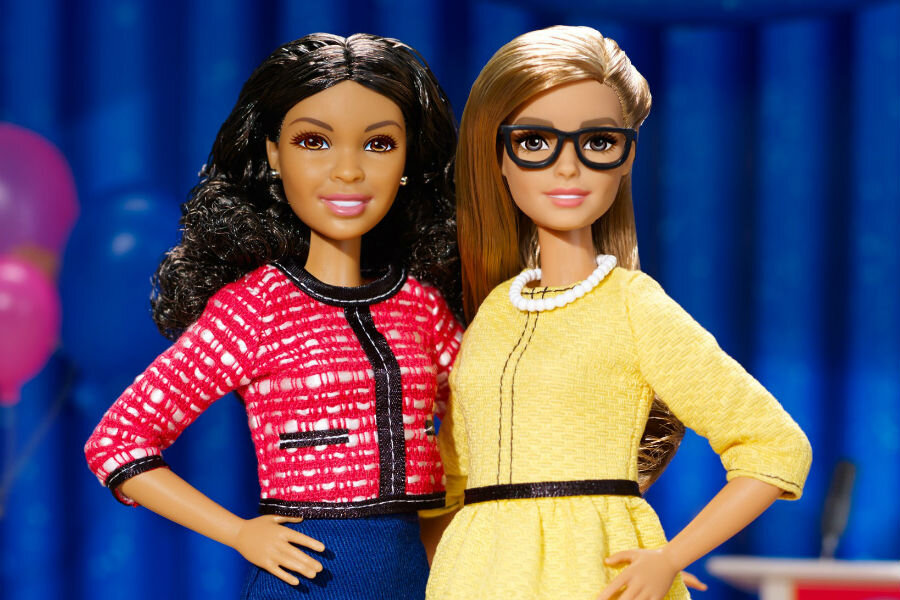Barbie runs for president, but this time it's on an all-female ticket
Loading...
Barbie has run for president every election cycle year since 1992 (sitting out only the election of 1996), but this year, she runs with a fellow Barbie as her vice president. The introduction of a Barbie all-female ticket by Mattel comes as the company attempts to better market Barbie to the changing tastes of younger, Millennial parents and imbue a brand typically viewed as body-focused and materialistic with an aura of social responsibility.
Barbie has seen a lot of change in the past year since Mattel’s 2015 change in chief executive officer from Bryan Stockton to Christopher Sinclair.
This past fall, Mattel marketed Barbie with a “You Can be Anything” campaign, focusing on advertising Barbie as a way for girls to imagine themselves in different careers. Mattel released an advertisement which shows young girls as a veterinarian, professor, and men’s soccer coach. The end of the ad shows a girl using Barbie dolls to give a professor lecture about the human brain with the superimposed phrase, “When a girl plays with Barbie she imagines everything she can become.”
“It’s sort of the beginning of our brand to start encouraging girls to do something,” said Lisa McKnight, senior vice president and general manager of the Barbie brand, told the Washington Post.
Along with a change in CEO, Mattel now consults a Barbie Global Advisory Council that includes women entrepreneurs and leaders in fields like science and math. The group of esteemed women (and one man) which offers a variety of perspectives and assessments of the Barbie brand includes Julie Ann Crommett, program manager at Google; Tammy Tibbetts, co-founder and president of the She’s the First scholarship fund; and ballet dancer Misty Copeland.
In January, Mattel released a line of Barbies with more diverse body types, including curvy, tall, and petite dolls with a variety of skin tones and hair textures. Some hailed the new diverse line of Barbies as a step forward in terms of relatable body images presented to young girls, while others viewed it as a money-making scheme by Mattel because parents would need to buy more clothes to fit a wider variety of doll body types.
President and Vice President Barbie will come in the original Barbie body type, but will be sold in six different skin tones for the price of $24.99.
While designing the doll running for political office, Barbie teamed up with She Should Run, a non-profit organization dedicated to expanding the pool of women interested in becoming elected officials. In a country with over 500,000 elected officials, 73 percent of those officials are men, according to the Who Runs in America? campaign. In an effort to encourage young girls to become political leaders, the back of the box containing President and Vice President Barbie includes a website featuring a downloadable worksheet encouraging parents to talk with their daughters about leadership.
Barbie’s new marketing efforts come in response to changing consumer behaviors. Millennial consumers, who represent $2.45 trillion in spending power according to Adweek, are attracted to corporations with a cause. Omnicon Group’s Cone Communications reports that 70 percent of Millennials spend more on a socially responsible product.
Sales of Barbie, meanwhile, have been falling in recent years; the brand saw a 3 percent decline in worldwide sales in 2016.
The question remains: will Mattel’s marketing shift to active play versus appearance change the minds of Millennials as they start to buy toys for their children? It may be difficult for the Barbie brand to leave behind the previous focus on appearance, some say.
“Unfortunately, the Barbie brand is rooted in appearance and beauty and body. And I don’t think they can really get away from that,” Elizabeth Sweet, who studies gender-based toy marketing at the University of California at Davis, told the Washington Post.








